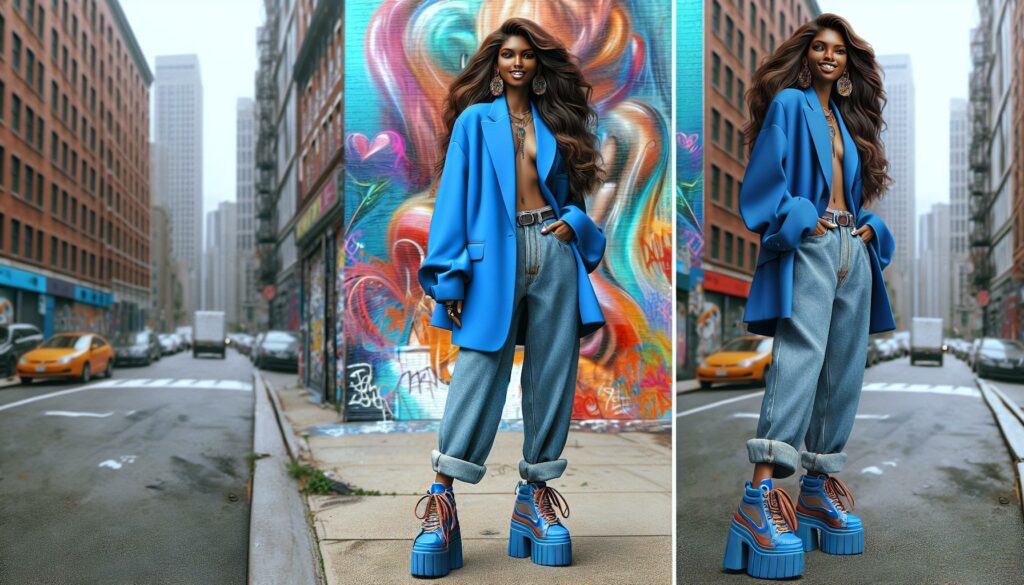In a world where everyone’s a critic and filters reign supreme, social media influencers have emerged as the modern-day rock stars. With a smartphone in one hand and a latte in the other, they’ve turned everyday moments into viral sensations, proving that a well-angled selfie can be more powerful than a thousand-word essay. Who knew that sharing a perfectly staged avocado toast could lead to a lucrative career?
As brands scramble to capture attention in a crowded digital landscape, influencers are the new marketing wizards. They’ve mastered the art of persuasion, wielding their followers like a magic wand. From beauty gurus to fitness fanatics, these digital trendsetters are rewriting the rules of advertising. In this article, we’ll explore how this phenomenon took off and why influencers are now the go-to choice for brands looking to connect with their audience in a more authentic way.
The Rise of Social Media Influencers
Social media influencers significantly shape consumer behavior. Their ability to connect with audiences fosters trust, driving brand loyalty. Influencers often provide relatable content that resonates with their followers. Engagement rates show followers value authenticity over traditional advertising methods.
Brands leverage influencer partnerships to reach niche marketplaces effectively. For instance, a fashion influencer showcasing outfits can increase brand visibility among targeted demographics. Campaigns utilizing influencers can generate up to 11 times higher ROI than traditional marketing approaches.
Influencers also create trends that can change markets overnight. Platforms like Instagram and TikTok allow influencers to highlight products organically, leading to immediate sales spikes. The ability of influencers to create viral content amplifies brand messages rapidly.
Studies indicate that 49% of consumers depend on influencers for product recommendations. This statistic reinforces the shift in marketing strategies toward influencer collaborations. Businesses prioritizing influencer marketing often see enhanced engagement metrics and a stronger online presence.
The rise of micro-influencers adds another layer to this dynamic. Micro-influencers, with dedicated follower bases of 1,000 to 100,000, connect on a deeper, more personal level. Engagement rates for micro-influencers typically exceed those of larger influencers, making them valuable marketing assets.
Overall, social media influencers are redefining how brands communicate with audiences. Their impact on marketing strategies continues to grow, emphasizing the importance of authentic connections in brand messaging.
Key Platforms for Influencer Marketing

Influencer marketing thrives on several key platforms, each playing a unique role in shaping consumer engagement.
Instagram’s Dominance
Instagram stands as a leader in influencer marketing, boasting over 2 billion monthly active users. This platform thrives on visual content, making it ideal for influencers to showcase products in aesthetically pleasing ways. Engagement rates on Instagram often exceed 1% per post, indicating strong audience interaction. Brands frequently collaborate with influencers to reach target demographics effectively. In fact, 79% of marketers consider Instagram an essential platform for influencer partnerships, highlighting its enduring relevance in the marketing landscape.
TikTok’s Rapid Growth
TikTok has emerged as a powerhouse in influencer marketing, capturing the attention of over 1 billion users worldwide. Short, engaging videos allow influencers to create compelling content that resonates with younger audiences. The platform’s algorithm promotes discoverability, enabling influencers to reach users outside their follower base. Campaigns on TikTok consistently outperform traditional ads, driving increased brand awareness. Research shows that 63% of users discover new products through TikTok influencers, showing the platform’s significant impact on consumer purchases.
Types of Social Media Influencers

Social media influencers fall into various categories, each influencing marketing strategies differently.
Macro vs. Micro Influencers
Macro influencers typically possess over 100,000 followers and often come with extensive reach. They generate high visibility for brands, making them appealing for wide-scale campaigns. Brands frequently partner with these influencers for increased awareness. Micro influencers, on the other hand, maintain follower counts between 1,000 and 100,000. These influencers usually engage with their audiences on a personal level. They often achieve higher engagement rates than macro counterparts, creating authentic connections with their communities that drive brand loyalty. Furthermore, micro influencers tend to excel in niche markets, making them valuable for targeting specific demographics. As such, both influencer types serve distinct roles in a brand’s marketing strategy.
Niche Influencers
Niche influencers specialize in specific areas or industries, such as fitness, beauty, or technology. They cultivate dedicated followings that share similar interests, resulting in a highly engaged audience. Brands recognize their influence, often seeking collaboration to reach targeted consumer segments. Niche influencers can deliver tailored content that resonates with followers’ preferences. Data shows that 49% of consumers trust niche influencers more when considering products within their specialized field. Consequently, this trust drives purchasing decisions, making them critical assets for companies aiming to connect with specific markets. Overall, niche influencers play a vital role in cultivating brand authenticity and credibility.
The Benefits of Influencer Collaborations

Collaborations with social media influencers benefit brands significantly. These partnerships enhance visibility and reach among target audiences.
Increased Brand Awareness
Influencer collaborations boost brand recognition effectively. By partnering with influencers, brands tap into established follower bases. This exposure often leads to heightened awareness within niche markets. Research indicates that campaigns utilizing influencers generate up to 11 times higher ROI than traditional marketing approaches. These influencers create engaging content that captures attention, leading to potentially increased consumer interest. Brands leveraging these connections maintain relevance in crowded market spaces. Furthermore, 79% of marketers consider Instagram essential for influencer partnerships, facilitating greater reach.
Authentic Engagement with Audiences
Influencers foster genuine connections with followers. They share relatable content that resonates on a personal level, driving engagement. Authentic engagement leads to increased trust, as 49% of consumers look to influencers for product recommendations. Micro-influencers excel in this area, often achieving higher engagement rates with their dedicated follower bases. Collaborating with these influencers allows brands to engage in meaningful conversations with potential customers. Campaigns become more impactful when influencers showcase products in real-life scenarios. Overall, brands can cultivate lasting relationships through authentic influencer interactions.
Challenges Faced by Social Media Influencers
Social media influencers encounter various challenges that can impact their effectiveness and success in the industry.
Oversaturation of the Market
Over 50 million influencers exist across platforms, leading to market saturation. This abundance makes standing out increasingly difficult. Many influencers compete for the same audiences, causing followers to experience fatigue from promotional content. Such a crowded landscape often results in decreased engagement rates as users become desensitized to influencer marketing. Notably, 63% of marketers express concerns about the effectiveness of influencer campaigns amid this clutter. Creating unique content becomes essential for influencers aiming to capture and retain audience attention in this oversaturated market.
Maintaining Authenticity
Maintaining authenticity remains a significant challenge for social media influencers. As brands seek partnerships, influencers face pressure to promote products that may not align with their personal values. Striking a balance between sponsored content and genuine engagement becomes crucial. Authenticity builds trust, and 49% of consumers rely on influencers for product recommendations. Therefore, presenting relatable content becomes essential for retaining follower loyalty. Influencers who lose their authenticity risk alienating their audience, as followers prioritize genuine connections over commercialized messaging. Adhering to their core values while navigating brand collaborations is critical for long-term success.
The rise of social media influencers marks a significant shift in marketing strategies. Their ability to connect with audiences on a personal level has transformed the way brands engage with consumers. As they continue to shape trends and drive purchasing decisions, the influencer landscape will evolve, presenting both opportunities and challenges.
Brands must navigate this dynamic environment carefully, ensuring collaborations align with their values while maintaining authenticity. The future of influencer marketing will depend on the ability to foster genuine relationships that resonate with followers. As the digital landscape grows, influencers will remain pivotal in shaping consumer behavior and brand loyalty.



